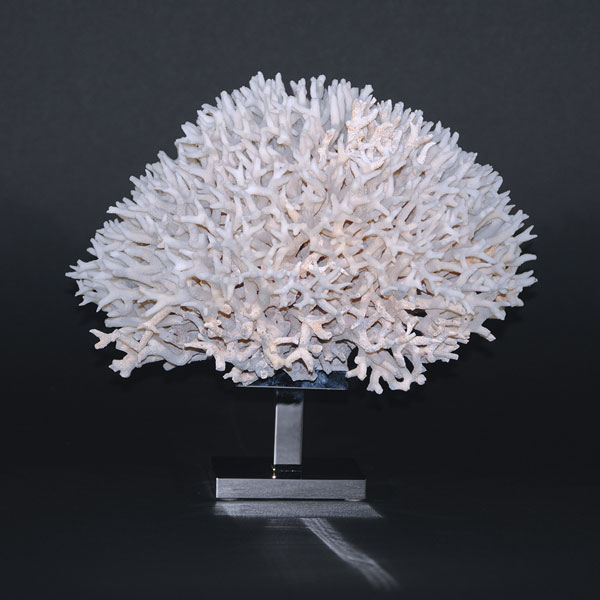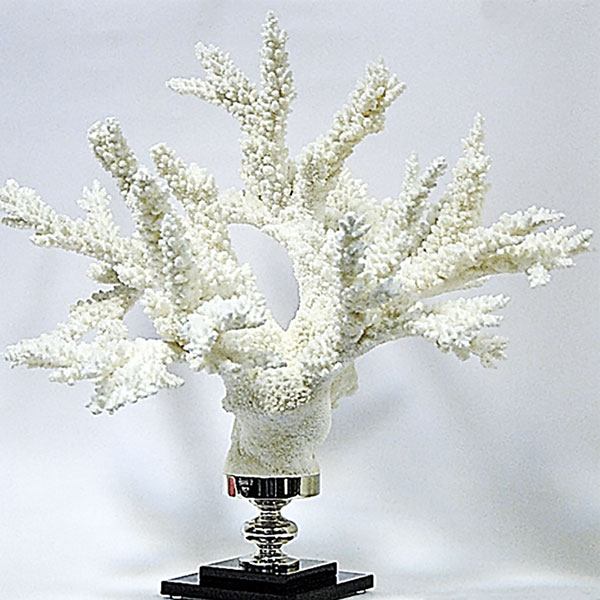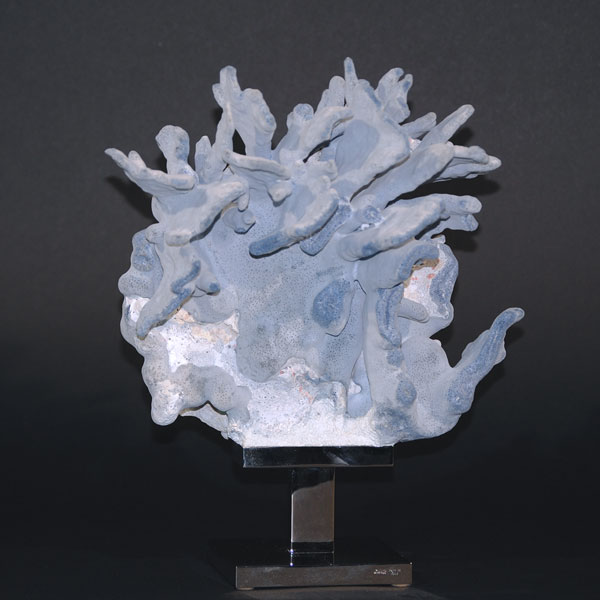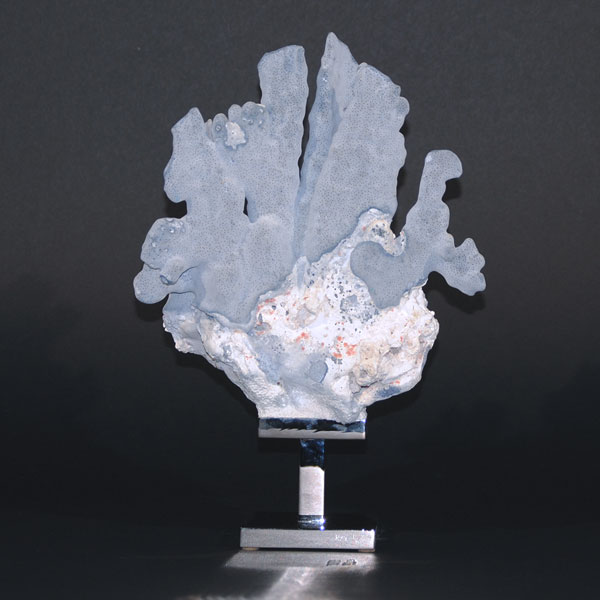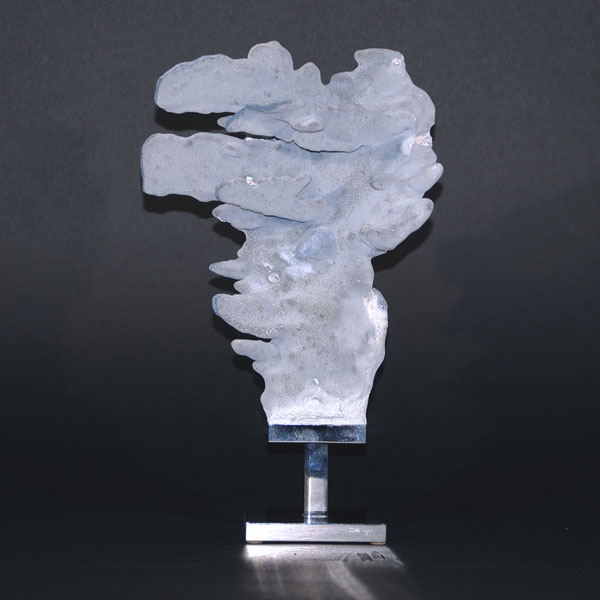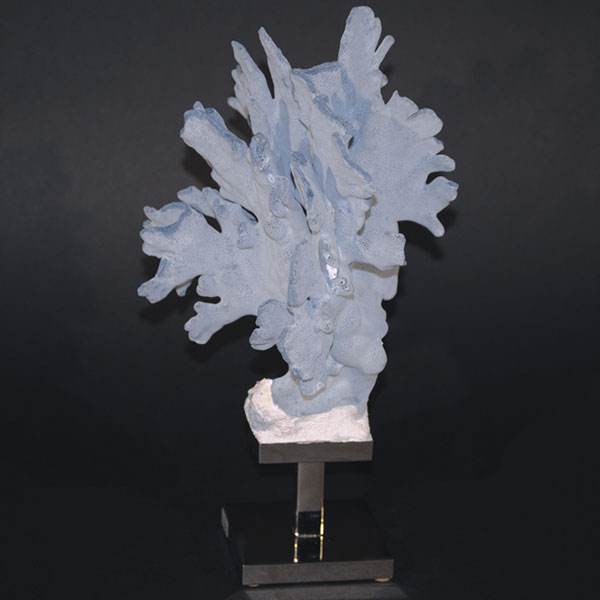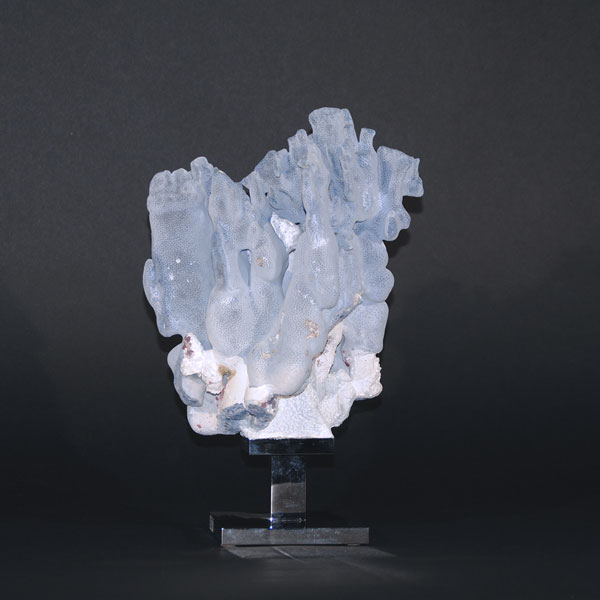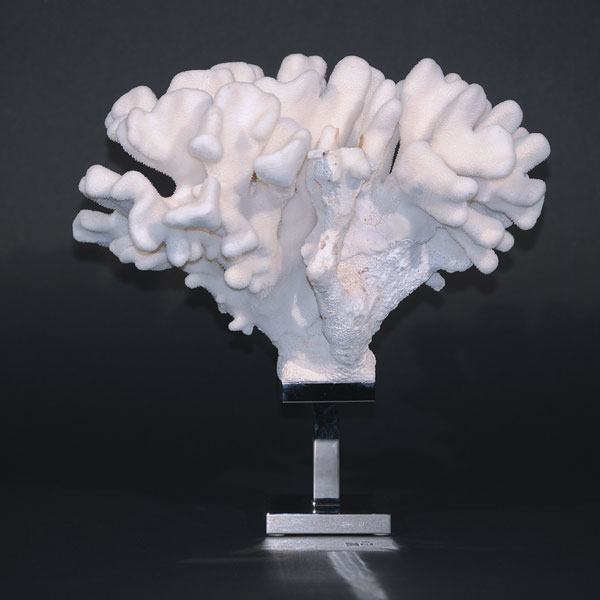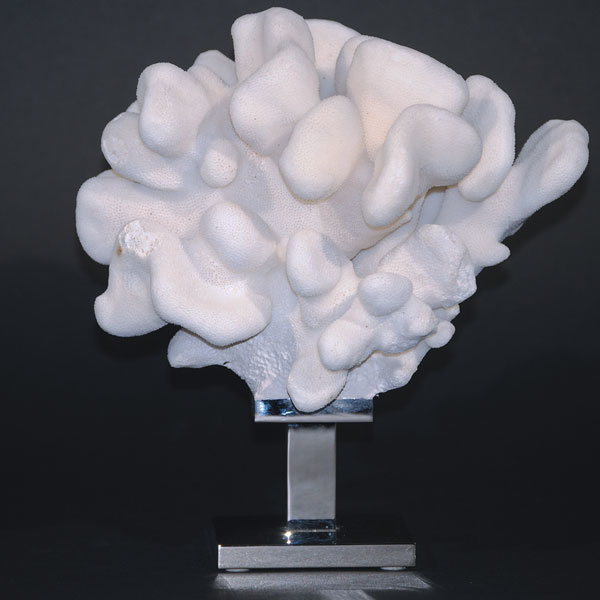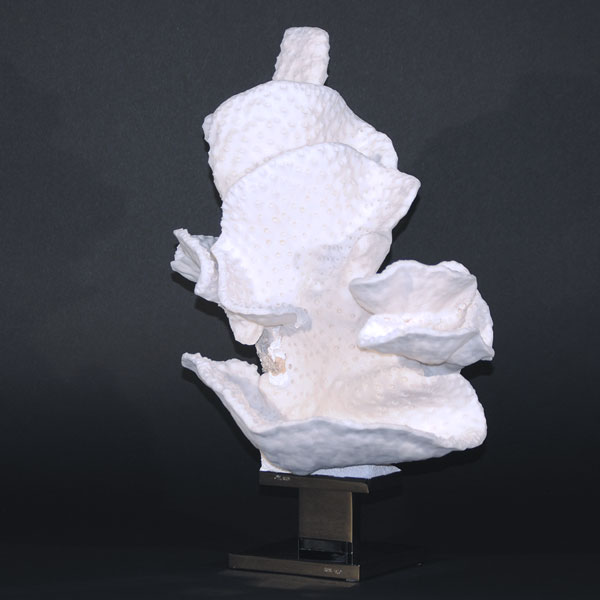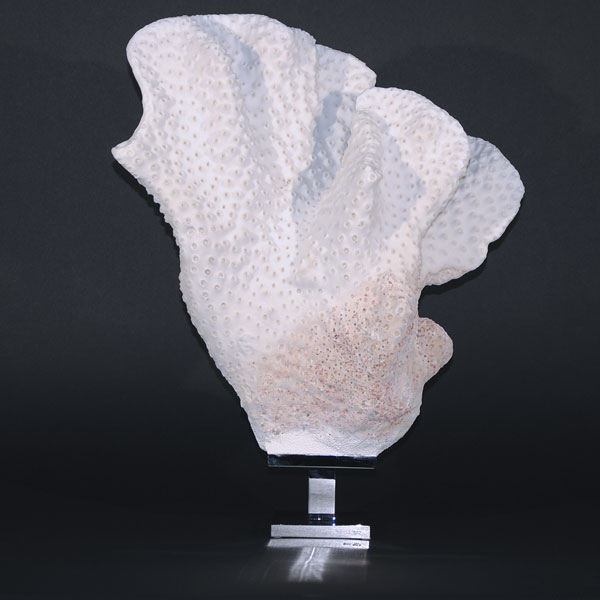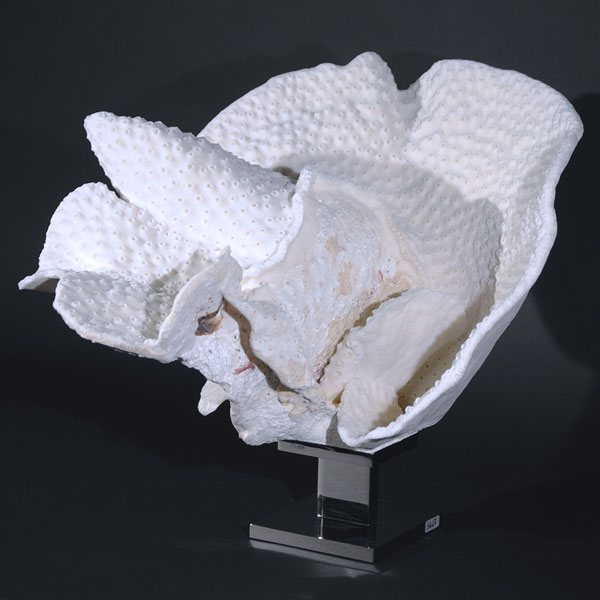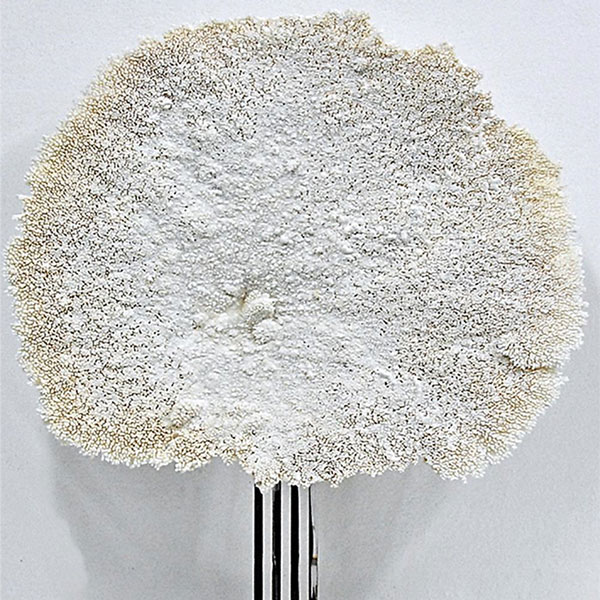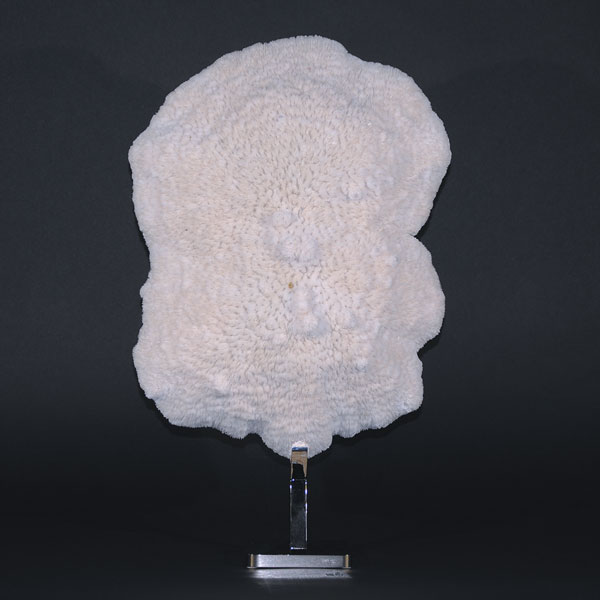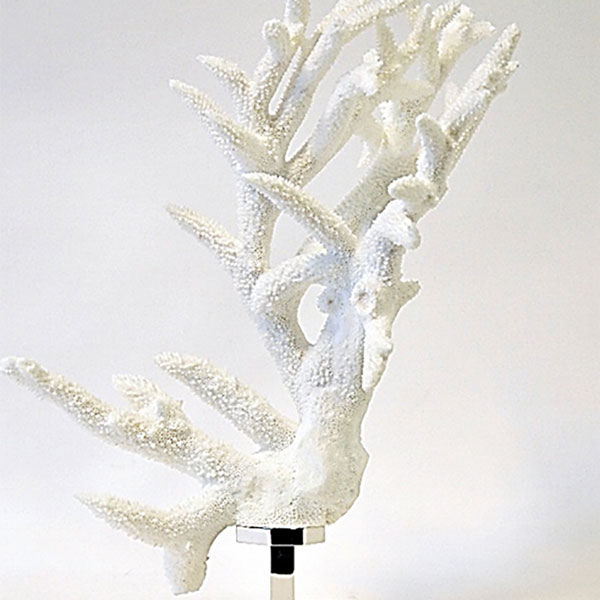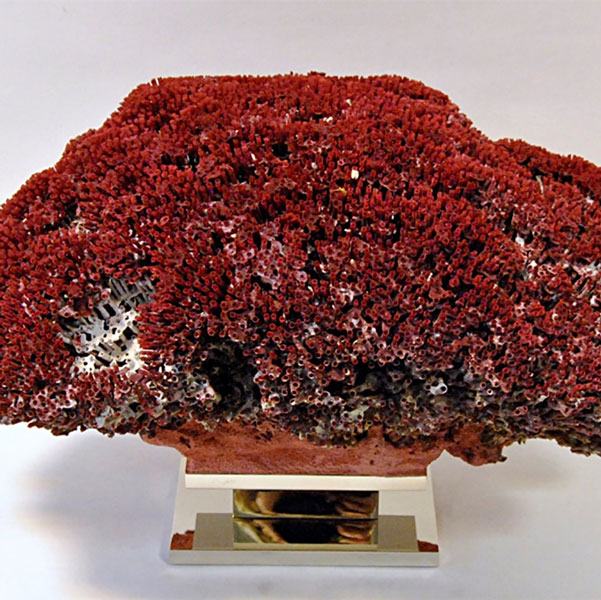Corals are marine invertebrates in the class Anthozoa of phylum Cnidaria. They typically live in compact colonies of many identical individual polyps. The group includes the important reef builders that inhabit tropical oceans and secrete calcium carbonate to form a hard skeleton.
A coral “group” is a colony of myriad genetically identical polyps. Each polyp is a sac-like animal typically only a few millimeters in diameter and a few centimeters in length. A set of tentacles surround a central mouth opening. An exoskeleton is excreted near the base. Over many generations, the colony thus creates a large skeleton that is characteristic of the species. Individual heads grow by asexual reproduction of polyps. Corals also breed sexually by spawning: polyps of the same species release gametes simultaneously over a period of one to several nights around a full moon.
Although some corals can catch small fish and plankton using stinging cells on their tentacles, most corals obtain the majority of their energy and nutrients from photosynthetic unicellular dinoflagellates in the genus Symbiodinium that live within their tissues. These are commonly known as zooxanthellae and the corals that contain them are zooxanthellate corals. Such corals require sunlight and grow in clear, shallow water, typically at depths shallower than 60 metres (200 ft). Corals are major contributors to the physical structure of the coral reefs that develop in tropical and subtropical waters, such as the enormous Great Barrier Reef off the coast of Queensland, Australia.
Other corals do not rely on zooxanthellae and can live in much deeper water, with the cold-water genus Lophelia surviving as deep as 3,000 metres (9,800 ft). Some have been found on the Darwin Mounds, north-west of Cape Wrath, Scotland. Corals have also been found as far north as off the coast of Washington State and the Aleutian Islands.
Availability
All Our Corals products are unique please contact us for avaliabilty
Please note that for extra-UE exportation we alway provides the CITES certificate to all our Coral product
Bird Nest Coral
the Bird Nest Coral
Seriatopora hystrix is a species of colonial stony coral in the family Pocilloporidae. It forms a bushy clump and is commonly known as thin birdsnest coral. It grows in shallow water on fore-reef slopes or in sheltered lagoons, the type locality being the Red Sea. It is native to East Africa, the Red Sea and the western Indo-Pacific region. It is a common species and the International Union for Conservation of Nature has assessed its conservation status as being of “least concern”.
Colonies of Seriatopora hystrix formed a tangled, bushy clump of fragile, slender, tapering branches with pointed tips. These clumps can grow to a metre (yard) across. In shallow positions with strong water movement the branches are thicker than they are in deeper or turbid habitats in sheltered positions. The corallites form neat rows of oval cup-shaped depressions with raised rims from which the polyps protrude at night. This coral can be cream, pink, yellow, brown or blue.
Please Note at the moment we are restoking our catalog contact us for availability of our Bird Nest Coral Products
Branch Coral
The Branch coral
The Branch coral (Acropora florida) is a species of acroporid coral found in the southwest and northern Indian Ocean, the central Indo-Pacific, Australia, Southeast Asia, Japan and the East China Sea, Cook Islands and the oceanic west Pacific Ocean. It can be found in shallow reefs on the reef tops, walls and slopes to depths of 30 m.
Colonies of Acropora florida consist of thick upright, and sometimes horizontal, branches growing from a sprawling or encrusting base. There are side branches and small branchlets which resemble knobs. The corallites are evenly spread. The colour of this coral varies, and may be pinkish-brown or some shade of green
Please Note at the moment we are restoking our catalog contact us for availability of our Branch Coral Products
Blue Coral
The Blue Coral
The blue coral (Heliopora coerulea), the only species in the family Helioporidae, is most common in shallow water of the tropical Pacific and Indo-Pacific reefs. It has no spicules, and is the only octocoral known to produce a massive skeleton formed of fibrocrystalline aragonite fused into lamellae, similar to that of the Scleractinia (stony corals). They form large colonies that can exceed a meter in diameter. They are composed of vertical branches, or folia.
The surface of blue coral and similar species appears smooth and the color in life is a distinctive grey-brown with white tips. The entire skeleton, however, has an unusual blue color and therefore the species is commonly exploited for decorative uses. The blue color of the skeleton (which is covered with a layer of brown polyps) is caused by iron salts. Blue coral can be used in tropical aquaria, and the crystalline calcareous fibres in the skeletons can be used for jewelry.
Elk horn Coral
the Elk horn Coral
Elkhorn coral (Acropora palmata) is considered to be one of the most important reef-building corals in the Caribbean, although current populations have been decimated by white band disease and have yet to fully recover. This species is structurally complex with many large branches. The coral structure resembles that of elk antlers. These branches create habitats for many other reef species, such as lobsters, parrot-fish, snapper shrimps and other reef fish. Elkhorn coral colonies are incredibly fast-growing, with an average growth rate of 5 to 10 cm (2.0 to 3.9 in) per year and can eventually grow up to 3.7 m (12 ft) in diameter.[5] The color of this coral species ranges from brown to a yellowish-brown as a result of the symbiotic zooxanthellae living inside the tissue of this coral species. Zooxanthellae are a type of algae which photosynthesize to provide the coral with nutrients.
Please Note at the moment we are restoking our catalog contact us for availability of our Elk Horn Coral Products
Cauliflower coral
the Cauliflower coral
Pocillopora verrucosa, commonly known as cauliflower coral, rasp coral, or knob-horned coral, is a species of stony coral in the family Pocilloporidae. It is native to tropical and subtropical parts of the Indian and Pacific Oceans.
Pocillopora verrucosa is native to the tropical and subtropical parts of the Indian and Pacific Oceans. Its wide range extends from East Africa and the Red Sea to Japan, Indonesia, Australia, Hawaii, Easter Island and the western coast of Central America. It is found at depths down to about 54 m (177 ft) but is most common between 1 and 15 m (3 ft 3 in and 49 ft 3 in). It is a common species in most of its range and is found on fringing reefs and moderately-exposed reef fronts but is less tolerant than P. damicornis of sediment and is therefore less common in lagoons.
Please Note at the moment we are restoking our catalog contact us for availability of our Cauliflower Coral Products
Cup coral
The Cup coral
Turbinaria is a genus of colonial stony corals in the family Dendrophylliidae. Common names for this genus include disc coral, scroll coral, cup coral, vase coral, pagoda coral and ruffled ridge coral. These corals are native to the Red Sea, Indian Ocean, Japan and the south Central Pacific Ocean.
Table Coral
The Table Coral
(Acropora hyacinthusand, Acropora latistella)Acropora is a genus of small polyp stony coral in the phylum Cnidaria. Some of its species are known as table coral, elkhorn coral, and staghorn coral. Over 149 species are described.[3] Acropora species are some of the major reef corals responsible for building the immense calcium carbonate substructure that supports the thin living skin of a reef.
Both Acropora hyacinthusand Acropora latistella are corals that forms large, low, roughly circular tables or semi-circular brackets. They have fairly variable form, mostly due to they very wide range of habitats. In turbulent water they form solid, heavy sheets with stunted vertical branchlets (it is found in very rough water), and in sheltered conditions they branchlets become longer, slender and more separate. These species of corals usually are abundant in exposed outer reef slopes of much of the western Pacific
Please Note at the moment we are restoking our catalog contact us for availability of our Table Coral Products
The Bowl coral
The Bowl coral
The Bowl coral (Halomitra pileus) Lives in large colonies, free-living, thin and delicate, and circular, dome or bell-shaped. They have no axial furrow. Corallites are widely spaced and increase in size as the colony grows. This species is found in southwestern Indian Ocean, central Indian Ocean, central Indo-Pacific, eastern Australia, oceanic West Pacific.
Please Note at the moment we are restoking our catalog contact us for availability of our Bowl Coral Products
The staghorn coral
The staghorn coral
The staghorn coral (Acropora cervicornis) is a branching, stony coral with cylindrical branches ranging from a few centimetres to over two metres in length and height. It occurs in back reef and fore reef environments from 0 to 30 m (0 to 98 ft) depth. The upper limit is defined by wave forces, and the lower limit is controlled by suspended sediments and light availability. Fore reef zones at intermediate depths 5–25 m (16–82 ft) were formerly dominated by extensive single-species stands of staghorn coral until the mid-1980s. This coral exhibits the fastest growth of all known western Atlantic fringe corals, with branches increasing in length by 10–20 cm (3.9–7.9 in) per year. This has been one of the three most important Caribbean corals in terms of its contribution to reef growth and fishery habitat.
Staghorn coral is found throughout the Florida Keys, the Bahamas, the Caribbean islands and the Great Barrier Reef. This coral occurs in the western Gulf of Mexico, but is absent from U.S. waters in the Gulf of Mexico, as well as Bermuda and the west coast of South America. The northern limit is on the east coast of Florida, near Boca Raton. In South-East Asia, it grows rapidly and abundantly in the reefs of the coasts of Sabah, Malaysia.
Please Note at the moment we are restoking our catalog contact us for availability of our Staghorn Coral Products
the Finger Coral
The Finger coral
Acropora humilis, also known as Finger coral, is a species of acroporid coral found in the Gulf of Aden, the Red Sea, the northern and southwestern Indian Ocean, Australia, the central Indo-Pacific, Japan, southeast Asia, the East China Sea, the central and western Pacific Ocean, the Johnston Atoll and the northwestern Hawaiian Islands. It also occurs in the Mariana Islands, Palau, and the Pitcairn Islands. Occurring in tropical shallow reefs on upper reef flats and slopes at depths of up to 5 metres (16 ft), it was described by Dana in 1846.
Please Note at the moment we are restoking our catalog contact us for availability of our Finger Coral Products
Tubipora (Organ pipe coral)
Tubipora (Organ pipe coral)
The Organ pipe coral (Tubipora musica) is an alcyonarian coral native to the waters of the Indian Ocean and the central and western regions of the Pacific Ocean. It is the only known species of the genus Tubipora. This species is a soft coral but with a unique, hard skeleton of calcium carbonate that contains many organ pipe-like tubes. On each tube is a series of polyps which each have eight feather-like tentacles. These tentacles are usually extended during the day, but will swiftly withdraw with any sort of disturbance. The skeleton is a bright red color, but is typically obscured by the numerous polyps, which are green or gray in color. In size, colonies can reach up to a meter across, while the individual polyps are typically less than 3 mm wide and a few mm long. They are restricted to shallow waters and tend to live in sheltered areas. They eat plankton. They are close relatives to other soft coral and sea fans. This species is sometimes kept in aquariums, but is temperamental, and is difficult to maintain
Please Note at the moment we are restoking our catalog contact us for availability of our Tubipora Products

